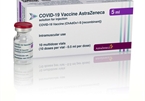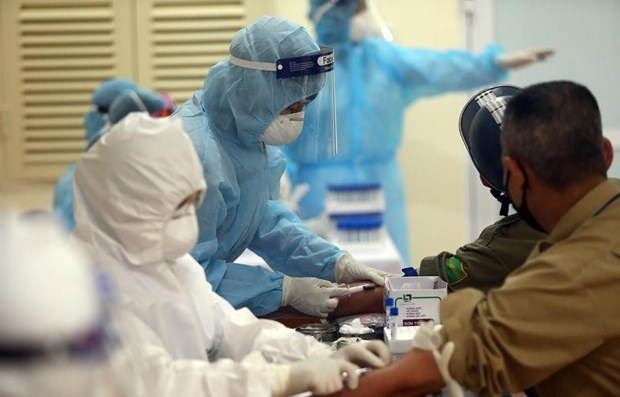|
On December 31, 2019, China told the world about the first cases of respiratory infections caused by a strange virus. Seventy days later, the World Health Organization (WHO) announced a global epidemic on March 11, 2020.
At that time, there were 1,488,405 infected people worldwide, 66,715 patients were being treated in medical facilities, and 4,635 people had died of Covid-19 in 117 countries and territories.
Since then, the pandemic has affected over 200 countries. The number of infected people had hit more than 108 million as of February 13, 2021. The number of people under treatment has increased, reaching 25.4 million by February 13, 2021. The death toll was 2.347 million (an average of 311 deaths per 1 million people) by February 13, 2021.
When the World Health Organization announced the global epidemic (March 11, 2020), only 9 of every 1 million people were being treated. This can be considered the threshold to distinguish between a world that has an epidemic (under 10 people under treatment for every 1 million people) and a global pandemic (over 10 people under treatment for every 1 million people).
On October 17, 2020, this rate was 1,166 people under treatment per 1 million people, and the rate was 3,380 people per 1 million people on January 30, 2021, 116 and 338 times higher than the rate on the day the pandemic was announced, respectively.
The question is: When will the level of global infection, measured in terms of the number of people under treatment at healthcare facilities, fall to less than 10 people per 1 million people, as the rate recorded before March 11, 2020?
Optimistically, it can be estimated that since the outbreak on March 11, 2020 to its first peak on November 30, 2020 is 325 days, and the time to reduce to the level of less than 10 infected people per 1 million people is also about 325 days.
That means perhaps at the end of 2021 or early 2022, the world will no longer have a pandemic, but small-scaled outbreaks in some countries will continue.
Countries and territories have experienced different waves of infection
1. Israel has experienced four Covid-19 waves
With a population of 8.5 million people, the safety threshold for Israel is no more than 85 people under treatment (less than 10 cases per 1 million people). So far, Israel has experienced four Covid waves.
When the first wave reached its peak on April 15, 2020 in this country, 9,800 people were under treatment, 115 times higher than the safety threshold.
Anti-epidemic measures were proven to be effective as the number of new cases and patients under treatment gradually decreased. However, on May 31, 2020, 1,974 people were being treated, 23 times more than the safety threshold.
After the preventive measures were loosened, infection increased again. By July 27, 2020, the second wave peaked with 36,378 people under treatment, 428 times over the safety threshold.
Israel once again tightened preventive measures so the number of people under treatment fell to 20,305, but it was 238 times higher than the threshold of safety.
Preventive measures were loosened again and the third wave broke out. By October 1, 2020, up to 72,400 patients were treated in hospitals.
After that, the number of people treated at healthcare facilities decreased to 8,274 people on November 18, 2020. Preventive measures were again loosened, and the 4th wave broke out, with 84,484 patients under treatment on February 5, 2021.
Comment: Israel is a country with modern science and technology, and its GDP per capita is more than $42,800 (nearly 15 times more than that of Vietnam). But the early relaxation of preventive measures when the level of infection in the community did not reach the safe level (less than 10 people under treatment per 1 million people) caused another outbreak.
2. Hong Kong has experienced four Covid-19 waves
With a population of 7.5 million, Hong Kong's epidemic safety threshold is less than 75 people being treated in hospitals. So far, Hong Kong has experienced four waves.
After the first wave of infections peaked on April 9, 2020 with 677 infected people under treatment at hospitals (9 times over the safety threshold), tightened preventive measures helped reduce the number of new cases and the number of people requiring treatment at hospital. By May 9, 2020, Hong Kong reached the safety threshold (with 74 people under treatment at hospitals, lower than the threshold of 75 people) and by May 18, 2020, only 27 people were being treated.
However, looser preventive measures led to the second outbreak, with the peak recorded on August 2, 2020 - 1,519 people under treatment at hospitals. And then the third and the fourth waves came. Currently, the number of people being treated is more than 400 people, five times higher than the threshold of safety.
Lesson: Hong Kong is a territory with GDP per capita of more than $49,300 (17 times higher than that of Vietnam). The strict control of the epidemic helped reduce the epidemic to below the safety level (10 patients treated at hospitals per 1 million people). However, preventive measures should not be loosened because the outbreak can return anytime.
3. Japan has gone through three epidemic waves
With a population of 126.4 million people, Japan's safety threshold is no more than 1,264 people being treated in hospitals. To date, this country has experienced three waves of infection.
After the first wave peaked on April 29, 2020 with 11,114 people under treatment (8.8 times over the safety threshold), Japan imposed strict preventive measures. This helped reduce the number of new cases and the number of patients treated at hospitals. By June 5, 2020, Japan reached the epidemic safety threshold (1,185 people treated at hospitals).
However, easing preventive measures made the epidemic break out again, with the second wave reaching its peak on August 12, 2020 with 14,263 patients treated at hospitals.
After the number of people in treatment decreased to 5,147 (4 times over the safety threshold), Japan loosed preventive measures and this resulted in the third outbreak, with 72,061 people treated at hospitals on January 19, 2021, 57 times more than the safety threshold. Currently, 26,953 people are under treatment at hospitals, 21 times higher than the safety threshold.
Lesson: Japan is a developed country, with GDP per capita of more than $40,800 (14 times more than that of Vietnam).
After the first wave of infections, Japan reached the level of safety, but loosening the epidemic prevention measures subsequently triggered the second and third outbreaks.
4. Thailand has experienced three waves of infection
Thailand's population is 69.78 million, so the safety thre shold is no more than 698 infected people being treated in hospitals. So far, Thailand has experienced three waves of infection.
After the first wave of infections peaked on April 9, 2020 with 1,451 people on treatment (twice the safe limit of 698 people), tightened preventive measures helped reduce the number of new cases and the number of people treated in medical facilities to 655 people by April 21, 2020.
From April 21, 2020 to December 19, 2020, for nearly 8 months (241 days), Thailand successfully maintained the number of patients under treatment at hospitals under 698. It is considered to be successful in controlling the Covid-19 pandemic.
However, after easing epidemic control measures on December 17, 2020 and along with the return of foreign workers, on December 20, 2020 the number of people receiving treatment at hospitals increased to 806, exceeding the safety threshold and after only 17 days, it skyrocketed to 4,847 people, seven times over the safety threshold.
Thailand again tightened epidemic controls and it helped reduce the number of patients under treatment to 2,704 on January 16, 2021. However, the number rose to 7,158 people on February 2, 2021, 10 times more than the safety threshold.
Lesson: Thailand maintained epidemic safety for eight consecutive months (more than 240 days), but loosening the preventive measures and control of immigrants can cause an outbreak again.
Three waves of Covid-19 in Vietnam
With a population of 97 million, the epidemic safety threshold in Vietnam is 970 people treated in medical facilities. After the first wave (March - April 2020), and the second wave (July - September 2020), Vietnam has entered the third wave (January - March 2021).
During the past year, from January 23, 2020, the number of people receiving Covid-19 treatment in Vietnam was always lower than the safety threshold of 970 people. The first wave of infections peaked on April 2, 2020, with 158 people under treatment.
The second wave of infections peaked on August 17, 2020, with 492 people treated at hospitals. The third wave started on January 27, 2021. By February 13, 2021, 631 people were being treated at hospitals, according to Worldometer.
If the safety threshold of less than 10 people treated at hospitals per 1 million people is applied to some provinces and cities in Vietnam in the 2nd and 3rd wave of infection, some localities are considered to have epidemics.
The outbreak in the central city of Da Nang began on July 27, 2020 with 14 people treated in hospitals. On August 14, 2020, the epidemic reached the peak with 280 patients treated in hospitals. Thus, Da Nang was considered to have a Covid-19 outbreak even though the country did not have one.
As of August 29, 2020, Da Nang had no new cases of Covid-19, but 159 people were still being treated in hospitals, 14 times more than the safety threshold. Therefore, the city was still in an epidemic situation. On September 23, 2020, when all patients were discharged from the city’s hospitals, Da Nang was confirmed to no longer have an outbreak.
In the ongoing third wave of Covid-19, Hai Duong is the epidemic center.
With a population of 1.9 million, Hai Duong's safety threshold is 19 people treated in hospitals. On January 27, 2021, the first case was discovered in the province and after only one day, 72 locally-transmitted cases were recorded. A total of 77 people were treated at hospitals, four times higher than the safety threshold.
As of February 14, 2021, the number of people treated in hospitals was 418, 22 times higher than the safety threshold. At present, after 20 days, it is unclear when the epidemic in Hai Duong will reach its peak.
Based on the current situation, it is estimated that by February 18, 2021, the number of people under treatment will increase by no fewer than 60 people, raising the total number of patients treated at medical facilities to about 480 people, 25 times more than the safe threshold.
In Da Nang, the epidemic ended after 59 days. For the case of Hai Duong, it is predicted that the epidemic will end after at least 60 days or at the end of March 2021. At that time, the number of patients treated in hospitals will not exceed 19.
So far, Covid-19 has spread to 13 provinces and cities in Vietnam but except for Hai Duong, the number of patients under treatment at hospitals in these provinces and cities is still at the safety level.
Therefore, the end of the third wave of Covid-19 in Vietnam mainly depends on when the epidemic in Hai Duong ends.
Prof. Nguyen Thien Nhan

Resilience helps Vietnam overcome year of COVID-19
Though COVID-19 has sent the global economy into one of its worst recessions ever, Vietnam posted GDP growth of 2.91 percent in 2020 thanks to its solid control of outbreaks and timely support to both enterprises and local people.

VNVC to import 30 million doses of COVID-19 vaccine in H1
The Vietnam Vaccine Joint Stock Company (VNVC) has announced that it will import 30 million doses of COVID-19 vaccine from the UK in the first half of 2020.
